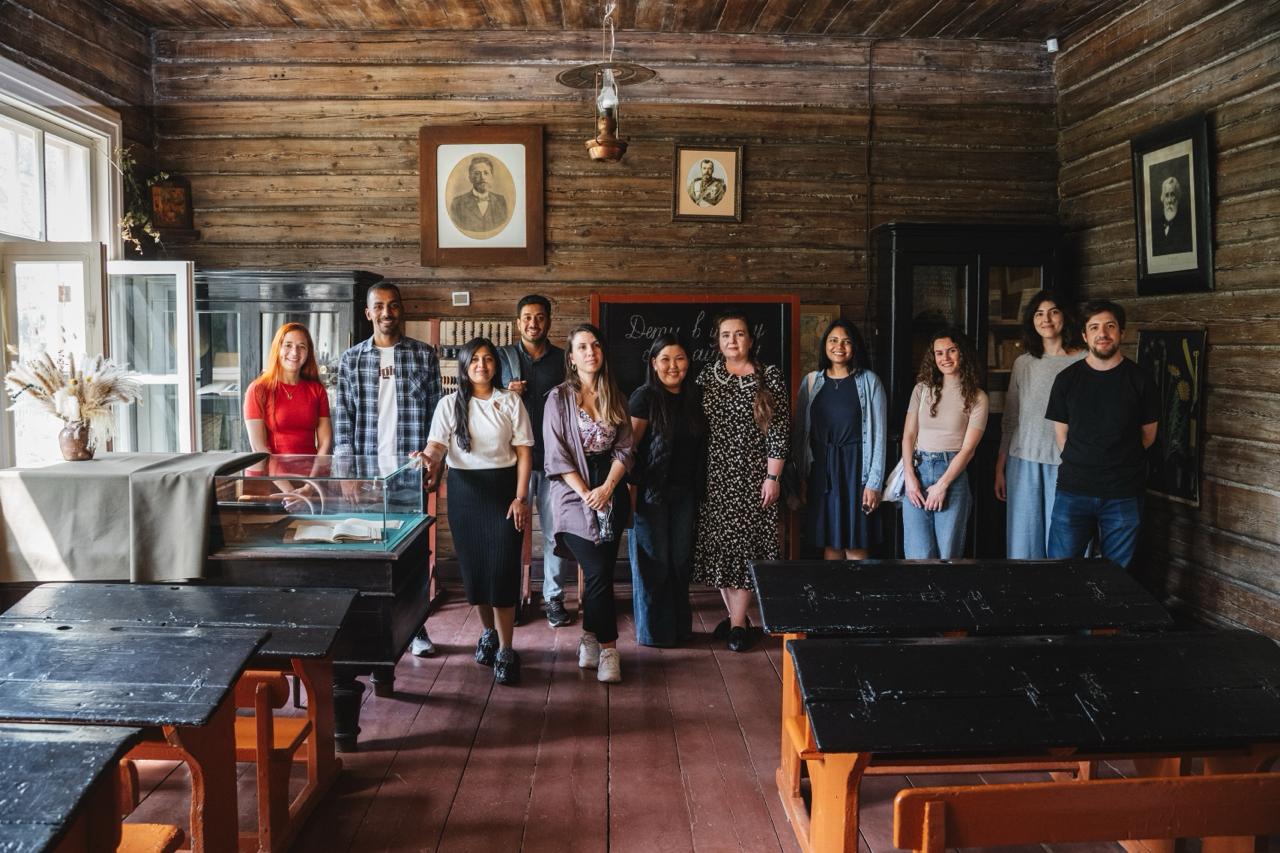Chekhov treated over a thousand patients for free — and wrote masterpieces between house calls. Anton Pavlovich never stopped being a doctor — not even when he was writing The Seagull or planting cherry trees. During his years in Melikhovo, he ran a clinic for local peasants, treated villagers free of charge, and still found time to craft stories that would change Russian literature forever.
Last weekend, our Russian language fellows followed his footsteps — quite literally — during a visit to the Chekhov estate in Melikhovo.
At the exhibition “Dear, Most Honorable… Home!”, they explored rare archival treasures and family relics usually hidden from public view. They visited the wing where The Seagull was written 130 years ago, stood in the school where Chekhov taught village children, and watched the fields where he once grew potatoes and ideas side by side.
And yes — they rubbed the shiny noses of Hina and Brom statues, his legendary dachshunds (because who could resist?).
Last weekend, our Russian language fellows followed his footsteps — quite literally — during a visit to the Chekhov estate in Melikhovo.
At the exhibition “Dear, Most Honorable… Home!”, they explored rare archival treasures and family relics usually hidden from public view. They visited the wing where The Seagull was written 130 years ago, stood in the school where Chekhov taught village children, and watched the fields where he once grew potatoes and ideas side by side.
And yes — they rubbed the shiny noses of Hina and Brom statues, his legendary dachshunds (because who could resist?).
The InteRussia program in Russian studies is implemented by the Mezhdunarodniki Autonomous Non-Profit Organisation in cooperation with the Gorchakov Fund and the Pushkin Institute, with grant support from the Presidential Grants Foundation.




